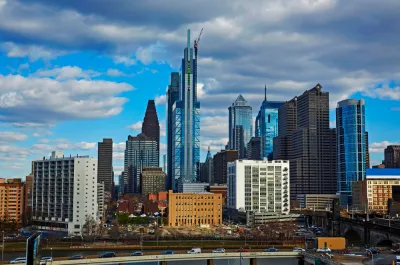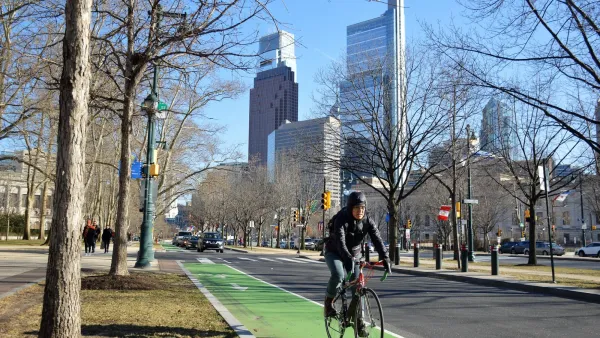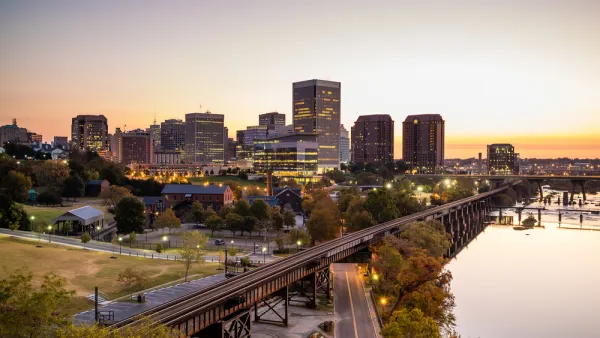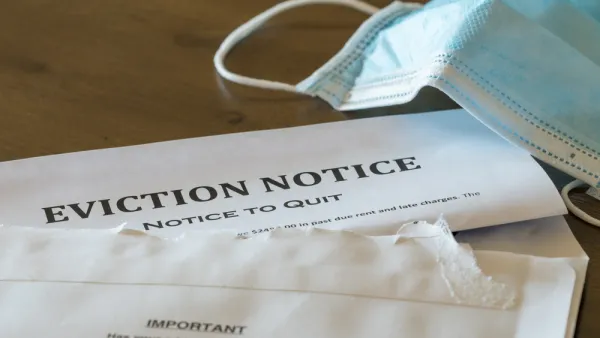The example of Philadelphia shows how a land value tax could provide relief to residents and the city's finances.

Josie Faass writes an argument in favor of a land value tax—an argument bolstered, according to the article, by how the city's real estate tax has fared during the pandemic.
"Based on the assessed value of an owner’s buildings and land, real estate taxes have remained in the black since the pandemic began, increasing more than 5% over last July’s total," writes Faass.
Faass makes the case that a simple change could leverage the stability of property taxes to ease the burden of the pandemic's economic downturn.
Because through a simple mathematical rejiggering of the tax code, Philadelphia could alleviate tax burdens on its most at-risk populations without reducing the overall revenue stream one dime — effectively creating a free stimulus for homeowners and businesses struggling to make ends meet. Philadelphia can create an environment of shared and increased prosperity.
The difference between a property tax and a land value tax is where the nuts and bolts of the "rejiggering" suggested here is found. In Philadelphia, the value of buildings makes up the vast majority of property tax bills, at 76 percent, versus just 24 percent for the value of the land, according to Faass.
If Philadelphia shifted to just a 50-50 ratio of tax on buildings to tax on land, homeowners would see a savings of over $60M each year, and with land value tax or LVT, that total jumps to about $123M — that’s over 10% less than residential property owners pay now, and in a city where the median household income is less than $48,000 a year, this will have real impact.
The difference would be made up for by land speculators, or "exactly who you'd hope," according to Faass.
FULL STORY: How a land value tax could make Philadelphia a more equitable city

Analysis: Cybertruck Fatality Rate Far Exceeds That of Ford Pinto
The Tesla Cybertruck was recalled seven times last year.

National Parks Layoffs Will Cause Communities to Lose Billions
Thousands of essential park workers were laid off this week, just before the busy spring break season.

Retro-silient?: America’s First “Eco-burb,” The Woodlands Turns 50
A master-planned community north of Houston offers lessons on green infrastructure and resilient design, but falls short of its founder’s lofty affordability and walkability goals.

Test News Post 1
This is a summary

Analysis: Cybertruck Fatality Rate Far Exceeds That of Ford Pinto
The Tesla Cybertruck was recalled seven times last year.

Test News Headline 46
Test for the image on the front page.
Urban Design for Planners 1: Software Tools
This six-course series explores essential urban design concepts using open source software and equips planners with the tools they need to participate fully in the urban design process.
Planning for Universal Design
Learn the tools for implementing Universal Design in planning regulations.
EMC Planning Group, Inc.
Planetizen
Planetizen
Mpact (formerly Rail~Volution)
Great Falls Development Authority, Inc.
HUDs Office of Policy Development and Research
NYU Wagner Graduate School of Public Service




























